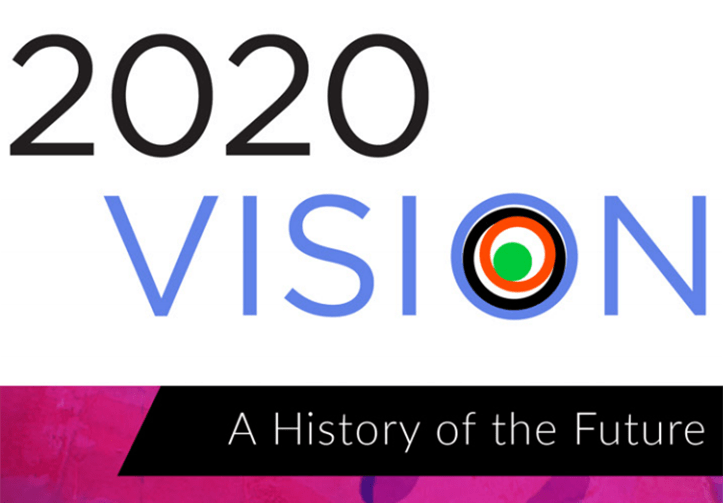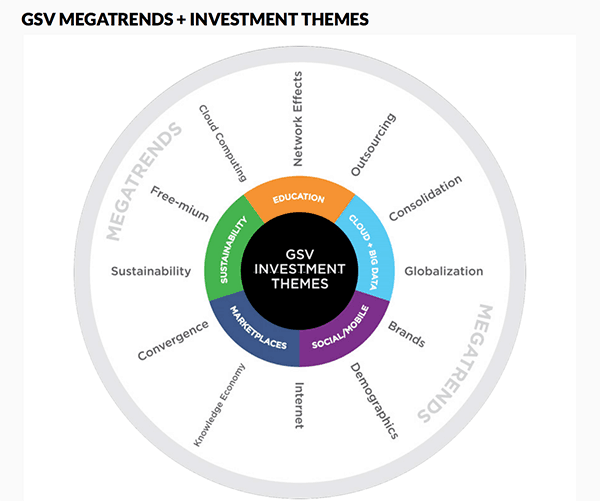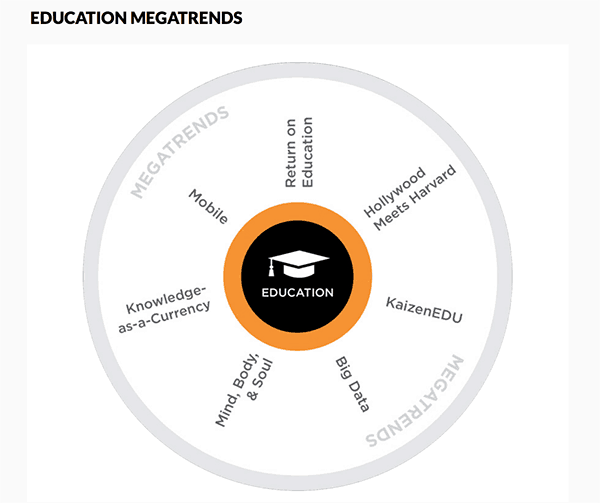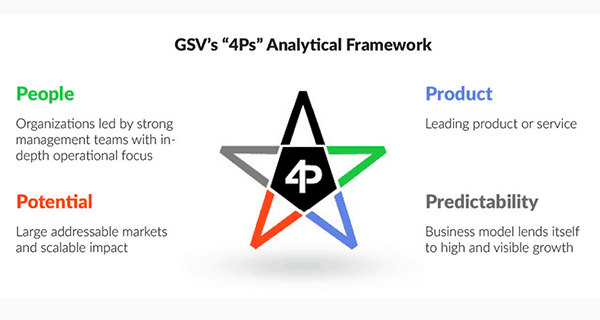2020 Vision: A History of the Future

To restore the fabric of the United States everybody needs an equal opportunity to participate in the future. That’s the thesis of 2020 Vision, a new book by the GSV team led by Michael Moe and Deborah Quazzo.
The book, like the GSV fund, advisory and incubator, are driven by an intent to make the best out of the “Boom of Big Ideas is transforming every industry” from healthcare to communications, transportation, and energy and now global education.
Their annual conference, co-hosted by ASU, is now the best gathering of the year focused on innovation in learning. Hundreds of startups are joined by dozens of philanthropy and venture investors, and hundreds of EdLeaders (here’s a report from the last ASU+GSV Summit). The next one is April 18-20 in San Diego.
Written in past tense, 2020 Vision: A History of the Future is 440 pages of time travel into a best case scenario of how the next five years could be transformational for global learning. Organized around 10 signpost developments, each of the well designed chapters includes a problem statement and a list of solutions, profiles of GSV investees and sector leaders.
The report suggests conclusive evidence for “Active Learning” — education that engages students in action, inquiry, imagination, collaboration, and personal reflection. Active Learning shifts accountability for learning from teachers to students, encouraging them to both “think” and “do.”
Megatrends
The report lays out a dozen megatrends, “powerful technological, economic, and social forces that develop from a groundswell (early adoption), move into the mainstream (mass market), and disrupt the status quo (mature market), thereby driving change, productivity, and ultimately growth opportunities for companies, industries, and entire economies.”
As noted in March, megatrends like technology, demographics, and politics, create windows of opportunity you can take advantage of if you are paying attention. There is usually a small window of time to build a solution, demonstrate some traction, and create something delights a community of users.
Signposts
Because GSV appreciates that megatrends tend to go underappreciated, the report includes a deep dive into global trends and seven education specific trends
- ROE. Return on Education (ROE) is the realization that the greatest returns will be created where companies achieved the greatest educational impact–investors share learner interests. Through greater transparency and integrated Big Data analytics, massive capital flows are being directed to the education companies demonstrating scale and impact.
- KaizenEDU. Kaizen is Japanese for “continuous improvement.” “KaizenEDU,” refers to “continuous learning,” effectively, all people are students. Episodic learning is being replaced by seamless, continuous learning driven by a constant need for new knowledge.
- Hollywood Meets Harvard. We needed to create education resources where there was high engagement, leading people to learn because they were interested, rather than being pushed. Hollywood is also a reminder that large investments in content quality can be leveraged over massive audiences.
- Knowledge as Currency. The old ticket to ride was a degree. The new ticket is a Personal Knowledge Portfolio that incorporated content, courses, and experiences curated over time. Fundamental skills include critical thinking, entrepreneurship, quantitative reasoning, and communication.
- Big Data = Smart Data. Advances in data science and database technology have unlocked insights for a wide range of industries. In education, recommendation engines and adaptive learning systems are powering personalized learning.
- Mobile. nearly 90 percent of high school and college students own a smartphone— it’s the first thing they look for when they wake up and the last thing they see before going to sleep. Learning platforms must be mobile friendly. Wearables are just the beginning of the quantified self.
- Mind, Body, Soul. Brain research and cognitive science are providing insights into how how we learned. We’re beginning to appreciate that the brain is influenced by physical fitness, happiness, diet, and wellness.
Combining an advocacy agenda and list of key levers, 2020 Vision is organized around 10 signposts each supported by some big ideas.
- Baby Steps: Equal Access to Early Learning
- Universal preschool
- Early learning on demand, digital assistants for parents
- Stepping Up: Develop + Elevate Transformational School Leaders
- Smarter training and development
- Smarter management tools and better networks
- Stepping Out: National Service as a Force Multiplier
- Expand AmeriCorps and provide education resources
- Leverage impact through digital networks
- Step On It: Accelerate Learning With Technology
- Technology upgrade cycles
- Remove school innovation barriers
- Incubate new tools and schools
- March to the Beat of a Different Drummer: Create Access and Improve Quality Through New Models
- Transparent review framework for EdTech product efficacy
- Provide “tuition” reimbursement for incubators and accelerators that offer rigorous academic programs
- Baby Steps: Strength Thru Diversity
- Coding camps in a box to boost K-12 STEM, maker and coding skills
- Build 21st century skills and provide job placement to underserved communities
- Cultivate diverse school leaders
- Step Ladder: Prepare a Modern Workforce
- Develop a coherent national human capital strategy
- Open data platform to dissemination education and labor market data for job seekers;
- Create a free digital curriculum on 21st Century skills
- Opening it Up: Open Systems, Personalized Knowledge Portfolio
- Link student work products to 21st Century skills so they can be easily added to a Personal Knowledge Portfolio as evidence of learning
- Eliminate the link between federal student aid and accreditation; use measures of student learning to signal value
- March Madness: Use the World’s Best Ideas
- Implement uniform, rigorous teacher certification standards
- Standard framework for apprenticeships
- Provide tax credits for investments in non-subsidized education
- Sprint to the Finish: Integrate Cognitive Science to Optimize Learning
- Accelerate the federal Brain Research through Advancing Innovative Neurotechnologies (BRAIN) initiative
- Incubate learning technologies at the intersection of mind, body, and soul through a DARPA-like R&D vehicle
4P EdTech Frame
GSV evaluates innovative solutions for the education market using a “4P” framework. The most important P, according to GSV is people, “There is no shortage of interesting ideas, but it’s always the People’s ability to execute against the opportunity that determines success or failure.”
Products should be unique and proprietary–they should have a “claim to fame.” With internet technologies disproportionate gains go to the leader in a category.
Potential is about estimating future market size. Predictability is about the viability of the growth enving and the operating leverage that comes with scale.
Through convening, communications, advising and investing GSV provides thoughtful sector leadership for the “next” economy-where if we following the 2020 Vision will mean more opportunity for everybody.
For more check out:










0 Comments
Leave a Comment
Your email address will not be published. All fields are required.